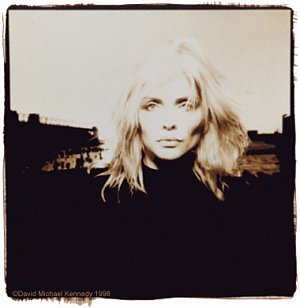
Driving down a winding road toward Zuma Beach, California one day, David Michael Kennedy found himself giggling out loud.
Underneath the laughs, he was anxious and hoped he hadn't made a mistake. As he pulled up to Bob Dylan's home, void of a haughty hair and makeup crew, he was greeted by the rock-and- roll great who seemed glad that he was alone. Kennedy was carrying out the singer's wish not to have a big "production" for the shot, and even told his lighting assistant to stay at the hotel. Kennedy's respect for his subjects has carried him far. As a commercial/portrait photographer when he worked in Manhattan from 1971 to 1987, his work was seen on album covers and magazines and he did fashion and advertising shoots. His long list of honors includes a Clio Award. "A lot of photographing people is about capturing what is going on inside them. They are giving you a gift by opening up and letting you photograph them," says Kennedy.
So, the two men unloaded the equipment from the car and Dylan even assisted setting up the ladder for the lighting and the canvas background for the shoot."He's just like any of us," said Kennedy of Dylan.

After that world-recognized photograph was taken, (it eventually graced the cover of Spin magazine), the two hung out and had a beer. "He dug that. He became part of the process, just one of the guys."
Admitting that he was a little nervous before the shoot he added, "I had to remember that Dylan just happened to be born with incredible vocals and an incredible art for lyrics, and that he's probably worried too-worried that I'm going to make him look like a dork."
reprinted with permission of:
Cygnus Business Media (publishers)
PO Box 47
Ft Atkinson WI 53538
613.845.2700.
and
Photography&Design
www.spdonline.com
| |
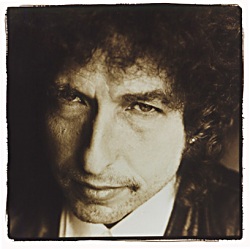
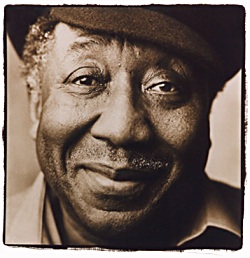
|
During his final years in New York City Kennedy became particularly known for his black-and-white portraits and photographed entertainers such as Bruce Springsteen, Debra Harry, Julian Lennon, Muddy Waters and Isaac Stern. He was consistently published in top magazines including Rolling Stone, Newsweek, lyme, Penthouse and Elle. But the commercial work became raw, calculated and more business than art to Kennedy, so in June 1987, he decided to move cross country with his with his wife and son toward humbler pursuits. The couple settled on the open land of Sante Fe, New Mexico, which gave Kennedy what he needed to keep his inspiration alive..To this day, he remains in the blue-skied state and documents American Indian life, New Mexico landscapes, and historical sites with either a plastic Holga camera, his Pentax 67 or one of his 25-year-old Hasselblad ELMs which he prefers for portrait work, while still concentrating on his personal work. Now more of a fine artist, his-work is collected in galleries from the Andrew Smith Gallery in Santa Fe to the Hackelbury Gallery in London, England. After over a decade in his new paradise, it seems the photographer's work is coming full circle. Recently, he has been commissioned by Working Women and Orion magazines to take portraits. But he approaches the assignments with a new outlook-that of optimism, void of commercialism. "I have total freedom now and I'm having a ball. I have a different mind-set. I treat it like a art project," said Kennedy. His latest assignment was to photograph a 79-year-old woman who worked as a welder at Kawasaki Motorcycles in Kansas all her life.
"So I took the camper and drove to Kansas. She was the epitome of what you would expect. She was perfect,"said Kennedy.
Another project led him to a female heavy-weight arm-wrestler, who by day, worked as a biochemist."She was smart, articulate and talked about how wrestling taught her how to focus in life. "He protects his celebrity work very carefully because he feels a sense of responsibility. He doesn't make prints into posters and if copies are made for a gallery, it is always a limited edition for hanging purposes only-never for reproduction.
|
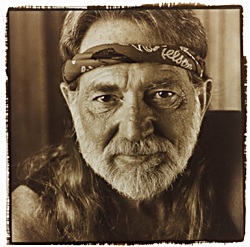
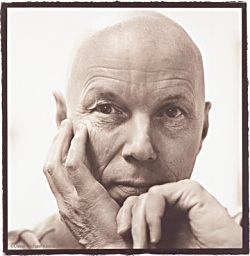
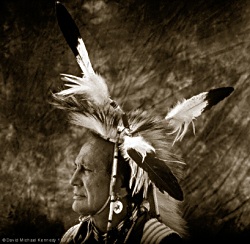
|
"For me it is not a legal issue, it's a moral issue. If someone wants a copy, I track down the celebrity and ask them if they feel comfortable with the request. These people have allowed me to photograph them. They are giving me a certain amount of trust."Kennedy always tries to have fun with those he photographs. When he went to Houston to photograph Story Musgrave at NASA, he took a tour of the premises with the astronaut. He went into the Challenger Space Shuttle and he saw the line of white space suits hanging up.
"He kept showing me these great locations and I kept asking him, 'Story, have you been photographed here, what about here?' And he had. We went into the men's room and I asked him again. He said he hadn't, so I said let's do our photograph here. Maybe that's why there's a certain intimacy between Story and me. There we were, immersed in multi-billion dollar settings and I'm photographing him in the men's room. "When celebrities come into Kennedy's studio to be photographed, he uses a foolproof technique that makes people comfortable. Food. When violinist Isaac Stern arrived at the studio, he told Kennedy he had only 15 minutes.
But Kennedy had already taken the liberty of catering Stern's favorite, smoked salmon and a particular wine that he loved.
"As we rushed towards the studio, he smells the salmon. He ended up staying for four hours. He came into the shoot like it was a pain in the neck and it became something fun and enjoyable. This is standard for me. If you have a good time doing the pictures, the pictures are going to come out great. This almostnever fails."
Even when the subject is obnoxious, difficult or late, Kennedy still approaches the photograph with respect and tries to uncover any fronts that a person may be trying to project.
Boxer Mike Tyson began as a horrible shoot. For starters, Tyson showed up for the 8 PM appointment at 2 am."I grit my teeth and did the best that I could. I still tried to find a way to uncover who Mike was. When he finally let down his guard, I found an opening. I could have reacted with anger and told him I'm pissed off. But all human beings have limitations and frailties and it is about (portraits) photographing whatever is going on now or who the person is right now."
Another celebrity took five hours to get dressed-he kept changing outfits. So, what did Kennedy do? "I took a tight head shot. The clothes were obviously not who the guy was."
|
One Kennedy constant is the Palladium Printing process he uses. Unlike the cool black and white values of silver prints, palladium processing creates those warm, brownish tones and the richness in his images. The process dates back to the late 1800s and involves brushing two coats of ferric oxalate, potassium chlorate (to increase contrast) and sodium chloropalladite (palladium and salt) onto archival rag paper. The sensitizing is accomplished by pouring the sensitized solution (emulsion) onto the paper and then brushing it on evenly. Kennedy may use more than one coating of the emulsion depending on the desired depth of the final print. The process ensures that each print will be unique, even if only subtlety, from the next.
To develop, Kennedy uses a saturated solution of potassium oxalate heated to about 120 degrees for plenty of warm tones.While the outcome is beautiful, the process is tedious and challenging. On a good day Kennedy and his assistant finish 5-8 prints by hand. He jokingly admits that at times the laborious process makes him "want to slit his wrists."
"The process Is as much magic as it is technique. You do not control the process, it controls you." Unpredictability of this process can be caused by humidity, changes In atmospheric conditions and static electricity. "There's a tremendous amount of variables you have to contend with," says Kennedy.
His archival prints style works well with his America Indian projects. It is not surprising that his work of the life and people on the reservations is very personal to him.
"I was always drawn toward American Indians. I identify with their culture and belief system." Recently, he has been capturing ceremonial traditional dancers of the Lakota Nation including activist Russell Means, who he met by working on a Penthouse story. The story was about Leonard Peltier, a member of Lakota Nation who many believe has been wrongly imprisoned for 27 years for allegedly murdering two FBI agents in South Dakota. Kennedy has even become active in the fight to free Peltier.
Through years of living and working In New Mexico, the shooter has made many American Indian friends who seem to understand him and his work. When trying to convince Crow Dog, a well-known medicine man, to let him take photographs, Kennedy simply showed him his portfolio. "Crow Dog just looked at the portfolio, smiled, and said "I understand.' "
Access Kennedy's Web site at www.davidmichaelkennedy.com
|








